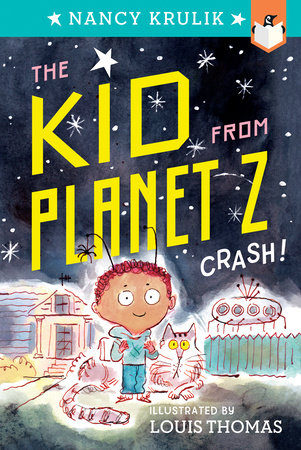 Three Pennies
Three PenniesMelanie Crowder
Atheneum/Simon & Schuster, 2017 181 pages
Grades 3-7
Realistic Fiction
Marin has spent the last seven of her eleven years in and out of different foster homes. The only possessions she still has from her birth mother are a pocket-sized version of the I Ching and a ceramic piggy bank. She is convinced that the mother she barely remembers, Summer Greene, is going to return for her any day now. While she's waiting she tries to be invisible and continuously consults the I Ching. Meanwhile, we see a glimpse of a professional woman in a nice apartment who longs for a child, a "by the books" social worker, who has more cases than she can manage, and an owl, prowling around the city of San Francisco looking for a home. The social worker, Gilda, places Marin in the home of the Lucy, a surgeon who desperately wants to share her home and heart with a child. Lucy has assembled a beautiful little room for Marin and makes every effort to bond, yet Marin is resistant. She still holds onto the hope that she will be reunited with her mom. After following clues leading to her mother's whereabouts, Marin finally tracks her down. The encounter reveals what the I Ching already inferred: Marin is holding onto someone that cannot be held onto. Lucy is frantic with worry when Marin disappears to find her mother. She calls Gilda for help and the two locate the disappointed little girl. When Marin is reunited with Lucy, she realizes that this is the mom of her heart. Unfortunately, Gilda must report that Marin ran away, which could compromise the adoption. Will Gilda risk her integrity to keep this small family together? And what of Marin's owl? After tracing her whereabouts throughout the story he becomes her "guardian owl" watching out for the little girl and, surprisingly, finding a home of his own.
Three Pennies is a sweet, quiet sort of story that will appeal to thoughtful and sensitive children. Kids will relate to Marin and sign with relief when she finds her forever home. All of the characters are likable in this story. There are more adult characters than are usually found in a book for children and we see Marin's tale from many different perspectives, including that of the feathered variety. The plot is straightforward,yet the telling is layered and rich, making for a beautiful book. Crowder chooses her words carefully and the book reads like an old fairy tale. San Francisco is my second favorite settling for books (New York being number one) and the city is a well developed character all on its own. You can practically feel the fog roll in as you read the story. I know very little about the I Ching and was fascinated about those bits and now want to give it a try. Even though this book features all female characters, it is not too "girlie" boys will like it too. The chapters are short and the book reads quickly. The multiple points of view, though contributing to the richness of the story, may confuse some children, making this book more appropriate to upper-level thinkers. I love how Lucy the surgeon makes sense of the world using medical analogies. Marin picks up this practice and says at the end that she and Lucy "are like two halves of a bone trying to connect after a bad break. Now that we've started growing together, we'll be stronger than before". That says it all.





